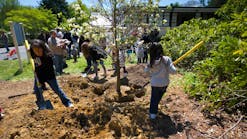New Guidance for 'Fracking' Near National Parks Released
Source National Parks Conservation Association
As the U.S. Department of the Interior’s Bureau of Land Management (BLM) updates rules for oil and gas drilling on federal land, the National Parks Conservation Assn. (NPCA) released National Parks and Hydraulic Fracturing: Balancing Energy Needs, Nature, and America’s National Heritage. This new report examines the impact of existing, proposed and potential oil and gas development on America’s national parks and offers recommendations to ensure future drilling safeguards public health and the environment.
“Our national parks are America’s most treasured places, and we need to treat them carefully as we develop the nation’s natural gas and oil,” said NPCA Vice President for the Center for Park Research Jim Nations. “Our research revealed that some national parks are already in peril. Unless we take quick action, air, water and wildlife will experience permanent harm in other national parks as well.”
Recommendations in the NPCA’s report include:
- BLM require that the identity of the chemicals be disclosed to the public before drilling begins, that all flowback waters be stored in closed-loop containers and treated before they are allowed to reenter public waters
- The National Park Service receive the designation of formal “cooperating agency” under the National Environmental Protection Act when there is a reasonable likelihood that national park air, water, wildlife, or other resources will be affected by oil and gas activities on BLM land
- The industry provide and pay for a comprehensive water quality monitoring plan for all park waters that might potentially be impacted.
- EPA implementation of a regulation to cut 95% of ozone and toxic emissions from natural gas wells developed through fracking, and take effect in 2015, take effect today and be expanded to cover existing and future wells
The report’s five case studies analyze national parks that are already in the path of the fracking boom, including: (1) Theodore Roosevelt National Park, (2) Glacier National Park, (3) Grand Teton National Park, (4) Upper Delaware Scenic and Recreational River and Delaware Water Gap National Recreation Area and (5) Big South Fork National River and Recreation Area and Obed Wild and Scenic River.
While visitors are continuing to enjoy free entrance to national parks this National Park Week, this report is a stark reminder that drilling rigs could obscure scenic views, vehicles could transport invasive species into park boundaries, drilling activity could lead to a loss of biodiversity, and popular star-gazing plans could be interrupted by gas flaring and drill pad lights.
Source: National Parks Conservation Association






